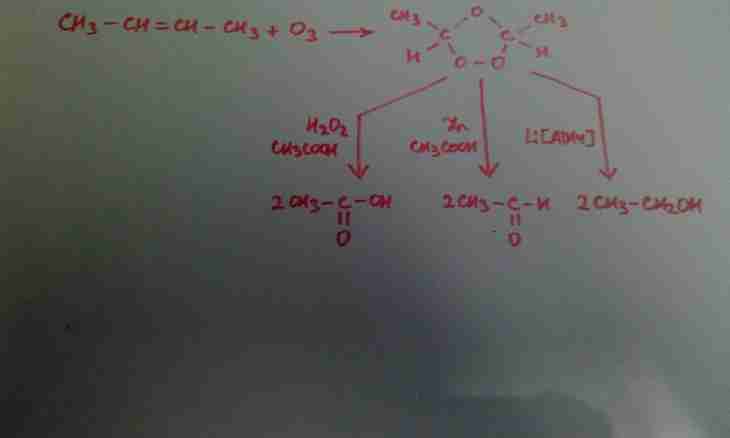Butane is the organic matter belonging to the class of saturated hydrocarbons. Its chemical formula C4H10. It is mainly used as a component of high-octane gasolines and as raw materials for production of butene. Butene — unsaturated hydrocarbon, gas, has formula C4H8. Differs from butane in existence of one double communication in a molecule. It is widely used at synthesis of butadiene, butyl alcohol, isooctane and polyisobutylene. Besides, butylene is applied as one of mix components to cutting and welding of metals.
Instruction
1. Look at formulas of the following chemical compounds: C4H10 and C4H8. What do they differ in? Only the fact that in a butane molecule on two atoms (more precisely, an ion) it is more hydrogen. From here a natural conclusion follows: to turn butane into butene, it is necessary to remove two excess atoms of hydrogen from its molecule. This reaction is called dehydrogenation. It happens according to the following scheme: C4H10 = C4H8 + H2.
2. What conditions of course of the above-stated reaction? Just like that under normal conditions it will not go. You need, first of all, high temperature (about 500 degrees). But only one temperature in order that reaction took place according to the scheme necessary to you, is not enough. By experimental data it is established that then the most part of butane will turn or into ethane and eten (ethylene), or into methane and propene, that is to pass according to the following schemes: C4H10 = C2H6 + C2H4 and C4H10 = CH4 + C3H6. And only absolutely small part of butane will turn into butene and hydrogen.
3. Therefore still the catalyst on the basis of nickel is necessary for you. At its presence at a temperature of 500 degrees nearly 90 percent of butane turns into butene, reaction will look as follows: C4H10 = C4H8 + H2. Therefore this reaction and is called "receiving butene from butane method of catalytic dehydrogenation".
4. Certainly, carrying out reaction at such temperature (500 degrees) is in vitro very difficult. Therefore the described method of receiving butene is used only in the industry.
5. There are also other ways of receiving butene. For example, oil cracking (high-temperature processing), catalytic cracking (thermocatalytic processing) of vacuum gasoil , etc. When cracking temperature at the expense of which dehydrogenation increases increases.

